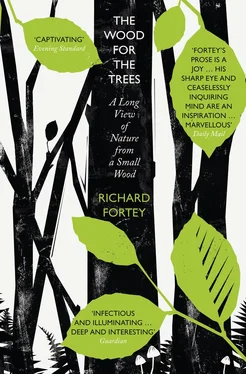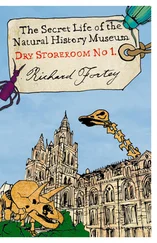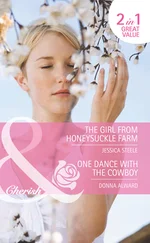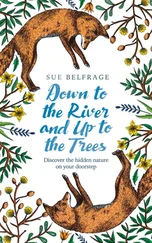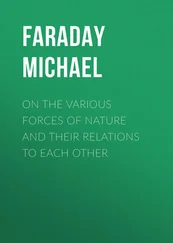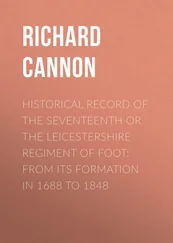It is a warm evening when Andrew and Clare Padmore arrive at the wood with their moth traps. Their small generator powers a bright light set in the middle of a stage. Beneath this platform the moths that are attracted to the light can tumble down into a container full of papier-mâché eggboxes. The light goes on at dusk and we sit under the beech trees on the edge of the large clearing waiting for darkness. Somewhere further away in the wood there is a noise made by some moderately large animal passing through; it is probably a badger somewhere near Grim’s Dyke. The night embraces us. The artificially illuminated beech trunks fade away a little spookily in the distance into far blackness.
The first moth – a beautiful Green Carpet Moth ( Colostygia pectinataria ) – comes out of the dark and desperately flutters around. It flops on to the ground sheet, and then off and around again until trapped in a jar where we can admire its triangular form and chequered green markings. As if from nowhere a big, hairy moth arrives. It has pale, furry legs which point forward as it rests, and exquisite, comb-like, brown antennae – Andrew identifies a Pale Tussock Moth ( Calliteara pudibunda ). It sits very still as if bemused, hind wings tucked under the forewings, which are marked with an impossibly complex, undulating greyish mottling. This particular species does not feed as an adult; its job is simply reproduction. Then comes a smaller, darker species, the Nut Tree Tussock ( Colocasia coryli ). ‘They are all,’ says Andrew, ‘in the peak of condition, just emerged from the pupa.’
Feathered antennae distinguish most moths from butterflies, which have comparatively slender ones carrying knobs at the tips, and it is clear that our moths’ antennae are working away even now, twitching and sweeping. They are hypersensitive chemical sampling kits smelling out messages borne on the night air: odours from freshly unfurled leaves as food for their caterpillars, or the attractive pheromones that identify their mates. Theirs is an olfactory world; light is almost superfluous. I have a vision of the night air as a miasma, dense with molecular messages that only moths can read. They do however use the moon for navigation – our lights serve to confuse their direction-finding, which is why the insects arrive in our collecting boxes.
They are not alone: two fat, succulent cockchafer beetles – May bugs ( Melontha melontha ) – prove that other creatures are also abroad. The big brown beetles scrabble at the light, looking oddly like cockroaches with ill-fitting wings. There is something repellent about their insistence. Although their larvae cause damage to plant roots the leaf-eating adults are harmless enough.
Now my eyes are fully accustomed to the darkness. The sky is visible in places between the interwoven crowns of the trees. It is not as profoundly dark as the distant recesses of the wood; it is rather an ineffably deep blue dotted with stars. As I look upwards the lamplight catches on horizontally disposed beech branches, making drapes of them, a series of stacked canopies fading upwards. Our sampling site has become a kind of theatre, with beech trunks making the proscenium columns, framed by swags of real leaves. Two small bats now flutter into the auditorium, briefly picked out by the illumination: in and out, and then again. Will they scoff the moths we have worked so hard to attract? When a Brimstone Moth ( Opisthograptis luteolata ) arrives even I, a moth beginner, can identify it, since apart from a few reddish splashes on the front of the wings it is all brilliant sulphur yellow. In contrast, the Waved Umber Moth ( Menophra abruptaria ), the size of a small leaf, is so perfectly disguised it looks like a fragment of animated tree bark; at rest during the day it is invisible. New arrivals continue. The light attracts a kind of living fuzz of many other tiny insects I cannot identify. They all have secret livings to be made in the wood, if only I could know what they were. Somewhere in the distance a screech owl cries, but not so fiercely, as if in sympathy.
Andrew Padmore will return to the wood many times. More and more moth species will be attracted to his lure, which is later replaced by a solar-charged model hidden deep in the trees. No harm is done to the gentle moths: a photograph is taken and they are released to go about their business. As I write the list of species recovered has now climbed beyond 150. Different moths are on the wing at different seasons, finishing perhaps with the November Moth. There is a curious poetry about moth names, which is an esoteric language of analogy, allusion and colour. The wood has yielded more than half a dozen different species of carpet moths. There are several pugs and rustics, thorns and swifts, footmen and oak beauties. Who can resist the Chinese Character, the Coxcomb Prominent, or the Feathered Gothic? Or Bloomer’s Rivulet, the Rustic Shoulder Knot, Blood Vein and Mocha? They are all in the wood. Sometimes the common name is a simple description: the Blood Vein does indeed have a single, bloodily tinted vein describing a clear line like a gash across the middle of the wings. The Chinese Character does carry a distinctive pictogram; but it more closely resembles a bird-dropping when at rest. The Flounced Rustic is a furry, wonderfully complex, mottled and blotched mass of tans and greys; but I fail to see the flouncing. The Mocha is a nationally scarce buff-and-brown moth that maybe suggested coffee to some entomologist in the early days of the science. All the names have charm. Nobody could argue about the origin of Peach Blossom ( Thyatira batis ); it is marked as if some evolutionary leprechaun had implanted a few whole, pink flower heads on the darker forewings – just for fun.
We caught some moth species only once; they probably included wanderers from grasslands and gardens, feeding on plants that are not found in the wood. I would have loved to find more hawk moths, but we don’t have poplars or convolvulus to nourish their caterpillars. The moths most commonly trapped are naturally those whose food plants are present in Lambridge Wood. They are an intrinsic part of the ecology. The incomparable Peach Blossom is a bramble feeder, our commonest shrub. The most abundant species of all was trapped 111 times: the Clouded Magpie ( Abraxas sylvata ), a large and very pretty white moth blotched with patches of orange-brown, grey and black. Its food plant is wych elm, and Grim’s Dyke Wood has plenty of wych elms. Andrew had never realised that it could be so numerous – but then, elms are not so widespread these days. The Gold Swift ( Phymatopus hecta ) is one of the few insects that can feed on bracken, that potpourri of pernicious poisons, and does not have far to fly to find its favoured larval foodstuff. The little brown Snout Moth ( Hypena proboscidalis ), all pointy at the front and the shape of a tiny delta-wing aeroplane, needs nothing more than nettles. Despite its name, the Willow Beauty ( Peribatodes rhomboidaria ) can feed on tough ivy. This moth is a wonderful confection of brown and black speckles on a buff background – the very embodiment of the word ‘cryptic’. It is so cryptically coloured the wonder is that the lepidopterists ever discovered it at all. The Satin Beauty ( Deileptenia ribeata ) is almost as well-disguised, and can feed on uncompromising yew needles. Then I must catalogue forty Lobster Moths ( Stauropus fagi ), dullish-coloured and almost as big as your thumb, and very plump and hirsute; as their Latin name implies they favour Fagus , and there are beech trees as far as the eye can see.
The Lobster Moth reminds me of an interesting puzzle. In spite of the wealth of its lepidopteran life I have noticed very few caterpillars since I have owned the wood. I have to conclude that this ‘eating machine’ stage of the moth’s life takes special trouble not to be observed : a green body on green foliage, stick-like mimicry, rolling a leaf into a private self-service restaurant – these are some of the tricks of the larval trade that different species employ to avoid a questing beak. Only very poisonous species like to announce themselves in yellow and black stripes. On a hazel stick I did find the caterpillar of a member of the geometer family (it might even have been that of the Brimstone Moth), a typical ‘inchworm’ with legs only fore and aft along the body, so it progresses by looping up its midriff as it brings its hind legs forward. Measured steps are not an inaccurate description (hence the geometry). When it stops under the threat of my close eye it raises one end into the air and becomes a twig. Even more, it shows countershading. That is, its upper part is darker than its underside. Normally, things lit from above are relatively illumined on that side, which makes them more conspicuous. By introducing compensating darker tones on the dorsal part of the body such contrasts are flattened out: the object (well, inchworm) melts into the background. As they say on soap powder advertisements: it really works!
Читать дальше
